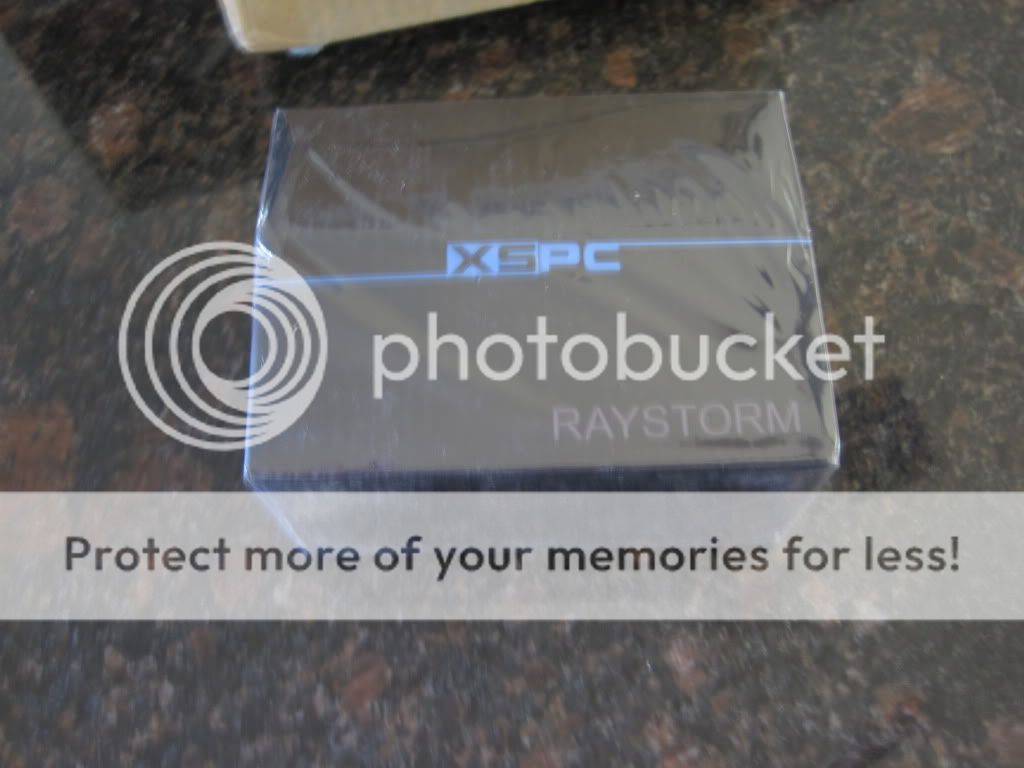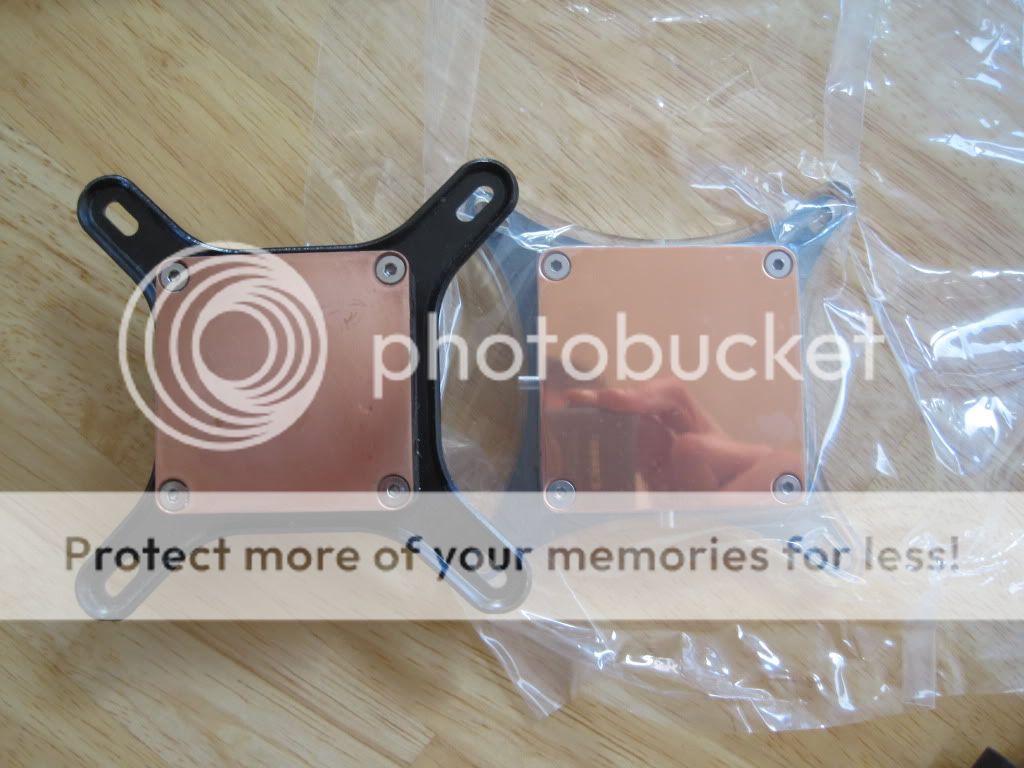This review attemps to cover some real world performance of the Raystorm block under different conditions to determine if it's worth buying or upgrading to. Martin did a very thorough review here, however sometimes it's nice to see more real world data to understand what this means to you
Aesthetics and Packaging
The block comes in pretty small box, but is protected well from damage despite this.
Inside the box are various unmarked mount plates, some TIM and blue LEDs:
The big fail though was the lack of instructions. I know I can work everything out, but from Martin's review it's clear that instructions exist, so why aren't they in the box?
Comparing the XSPC Rasa (left) and Raystorm (right) blocks you can see the style is very similar. The mount system is identical, however the Raystorm doesn't screw the top mount to the block. This is not a big deal. The Raystorm also comes with LED's to make it look more glamorous in your case. Asethetically I'd definitely say it's an improvement over the Rasa.
Looking at the rear of the blocks you can see the Raystorm has a slightly larger copper base. The polish on both blocks was similar when they first arrived, the Rasa however was tarnished around the edge of the block (not where it contacted the IHS however). The Rasa is duller now after using Indigo Extreme TIM that needed lapping to get completely off. Before testing it was re lapped to a nice mirror.
Test Conditions
All tests were completed on an i7-990x running at 4.4GHz (23multx193bclk) with 1.412Vcore and 1.35Vqpi, memory was run at 1600-9-9-9-27-1N. Hyperthreading on, LLC enabled, all throttles, speedstep etc were turned off. Loading was tested using stresscpu v2 for linux 64 bit under redhat 5.7 kernel 2.6.18-274. Stress cpu is based on the gromacs core (from folding at home) and is fairly stable vs time wrt to temps. Temps were logged on every cpu core every minute using kmod-coretemp and lm-sensors lib. The loop was given 10 mins of time to stabilize before logging for 10 mins. The recorded temperature was an average of all 6 core temperatures for 10 minutes i.e. 60 readings. All thermal interface material (TIM) was shin-etsu x23-7723D unless otherwise stated. This was selected as it is very insensitive to poor application and still has decent performance. To be really fair I should have remounted each cpu block 5 times and taken the best result, shin-etsu seemed the best option given that I didn't have time to do this.
 |
| Testing! |
Results
For the full data set go here.
If we look at only data concerning the rasa and raystorm we see that under *all* conditions the raystorm beats the rasa block:
Overall the block performs 1-2.5 degrees C better than the Rasa block. However this is with a fairly small load, this is really 4-10% of the total temps and is therefore quite a big deal in some cases.
Restriction
The raystorm temps are pretty much independent of the pumps i.e. flow rate, for example the loop temperatures are basically the same and are only affected heat dump (more pumps/volts) or radiators. The rasa on the other hand performs much worse when you only have 1 regular D5 pump. This loop is hardly restrictive (1 rad, 1 cpu block and 1 pump) and we see that the rasa could perform better with a 2nd pump, or by driving the pump at 24V. While it is expected that the raystorm will perform better in restrictive loops given that it is very low restriction, it is suprising that even in a basic loop that the change in restriction already makes a difference.
Conclusion
Overall the Raystorm is an excellent block. Given that it is priced roughly $10 more than the rasa, I would recommend it to anyone looking to buy a block. If you're a rasa owner you may want to consider upgrading if you don't have a large amount of pump power. The improvements are not only limited to performance either, the new block is prettier too. All around a great block only let down by a lack of instructions.
9/10





No comments:
Post a Comment